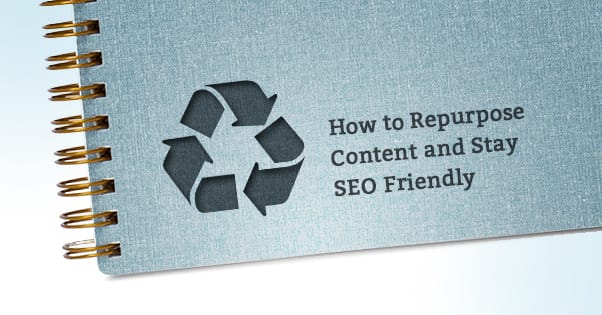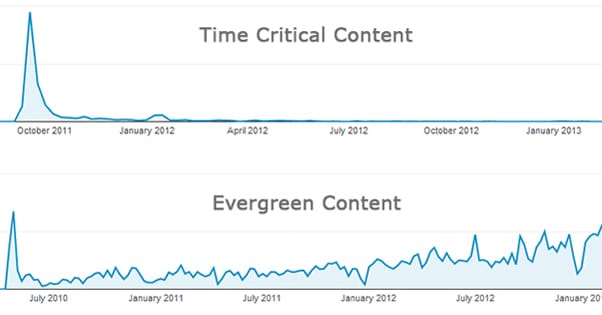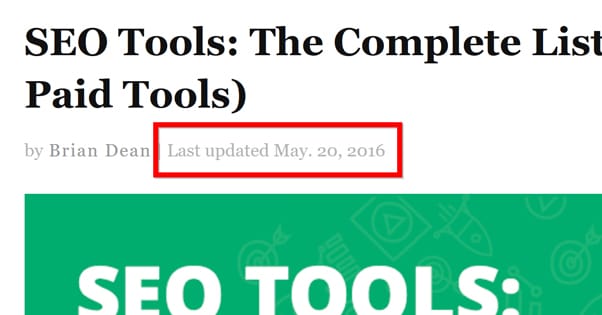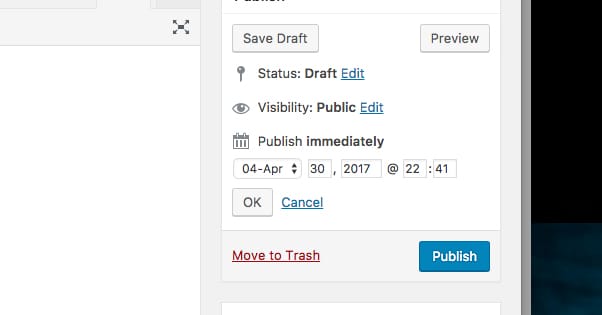How to Repurpose Content and Stay SEO Friendly
Published by James Parsons • Search Engine Optimization • Posted April 30, 2017 ContentPowered.com
ContentPowered.com
As bloggers, we tend to figure that content has a certain lifespan. Other than the few pieces of evergreen content we create that keep some semblance of traffic going for years, most content gets a few days, a few weeks, or maybe a month or two of traffic and attention before they fall off the map. Blogs are packed full of old content that is no longer relevant, taking up space.
You can’t simply delete this content. Doing so makes your site smaller, gets rid of any links you had pointing to that old content, and hurts your SEO in general. However, it all feels like a waste, doesn’t it? It seems like you should be able to do something with that content to give it new life.
Decide if the Content is Right for a Second Chance
There are two types of content on your site that might be worth repurposing and giving new life. The first is your evergreen content, the content that already has some life in it, which you can take advantage of to get it a second footing. This is your popular content long-term, content that has a lot of value, but that for whatever reason people have stopped visiting over time.
Evergreen content is excellent as a target for more life, because it’s already almost there. All it needs is a quick refresh and a new round of promotion, and you’re done.
The other type of content is content that had great viral appeal, but which died off over time. Some of this content is excellent for repurposing, but some of it isn’t.
So what makes a piece of content good to repurpose and recirculate?
- The content has existing links and, if possible, traffic.
- The content is still more or less relevant today.
- The content will take minimal editing to get up and running.
By contrast, content you don’t want to try to repurpose might look like this:
- The content is based on news stories or memes or trends that have fallen out of style.
- The content includes tips that are no longer valid tips.
- The content refers to products or services that no longer exist.
For example, I don’t want to share with you a tutorial for using Yahoo Pipes, since Yahoo Pipes died at the end of 2015. I wouldn’t want to share with you a post about how to use Rage Faces in marketing, because they’re considered mostly outdated these days. That kind of content would take a total revamp if I wanted to make it valuable to a modern audience, so it’s better to create a new post from scratch.
Decide on a Style of Repurposing Content
There are, in my experience, three styles of repurposing content.
The first style is a simple recirculation. This is for the content that is pretty much already ready to go. This is the evergreen content that’s accurate and relevant for everyone currently working in marketing today. You’ll want to read over the content, make sure there aren’t any lingering old typos, make sure any links go to valid, relevant sources and are not broken, make sure all the advice is still valid and relevant, and so forth. You can add some new content, you can update some content, you can expand on some content, and generally make some improvements, but you don’t need to. For the most part, the content is fine on its own.
All you need to do with this style of repurposing is simply put it through your promotion engine. Share it on social media a few times, maybe 2-3 for Facebook, 5-7 for Twitter, and so forth. Link to it in some of your new blog posts. You can even go out and write a guest post somewhere, and link to that post as your one allotted link. You can put it through as much or as little circulation as you want, and can generally keep slipping it in every month or so, to get more exposure and keep it alive.
The second style is an update and recirculation. This is for the kinds of content that needs more work to get up to date. For example, if I wrote a post about avoiding or recovering from a Panda algorithm update, I might have to update the definition of what Panda is and what modern web standards consider quality content, since that definition has changed. I might update the list of dates where Panda updates have been confirmed, or remove it entirely because – since Panda was rolled into the core algorithm – there haven’t been specific Panda updates in a while. I might emphasize other parts of content, like mobile compatibility, that I might not have mentioned before.
This kind of repurposing takes a little more work and a little more planning, because you can’t simply take the post and get it going again. You need to do a dedicated read-through of the post and figure out what kind of edits or changes you want to make to it. You also have to check all of the links and non-link recommendations to make sure they’re still what you want to be recommending. Then, of course, you need to actually make all of those updates. Unless, of course, you determine that the edits would need to be too heavy and would remove the original value and purpose of the post, at which point you simply let it die and write a new post in the same vein, with modern information.
At this point you can put it through your promotion engine just like the above method. This is the one commonality between methods; once you have the post up and running, you promote it to give it new life. Otherwise, it won’t show up as new to your audience.
The third style is the spiritual sequel. For example, if I dig back in the archives, I can find that we wrote a post about signs your blog posts are boring. I could create a new post with new, updated tips about that exact same topic, with updated information, new links, new ideas, and a more refined writing style.
For an example of this in action, all you need to do is look at Rand Fishkin’s ongoing series of SEO predictions. Every year he writes an article about SEO predictions for the coming year, and he grades his past predictions. The 2017 edition is here. It’s not strictly repurposing content, but it’s creating new content based on the old content, in a way that brings continuity and value year over year.
The drawback of this model is that you’re not so much repurposing your old content, as you are creating new content on the same theme. When you do this, you have to be very careful not to use essentially the same content over again, otherwise you can take an SEO hit because of keyword cannibalization or because you’re just publishing the same basic post again.
On the other hand, you can “brand” these posts in a series, like Rand did with the predictions, and make it into something people look forward to. A monthly or quarterly series where you revisit data and continue to analyze trends can be a huge evergreen powerhouse in both branding and SEO value.
Should You Change Publication Dates?
One question that comes up when you’re repurposing old content is whether or not you should change the publication date on the article.
On one hand, if you keep an old publication date, people might think the article is old and out of date and will give it less trust. You can combat this by putting a big headline at the top – or even in the title – “UDATED 03/14/17” or whatever the new publication date is, to make sure people understand that you’re keeping the post up to date. That doesn’t help in the Google search results, however, where the date is shown in front of the snippet but the title is often truncated. You can put it in front of the snippet in your meta data and hope it carries over, and that might work, or it might not.
On the other hand, if you change the publication date, people might wonder where the old version went. You will have to make it clear that the old and new versions are the same URL, even if you change the publication date on your post itself. Plus, as mentioned, Google will keep the old publication date, because it’s really more the date they indexed, not the date you claim it was created. Google does this so they don’t have to worry about people backdating content to try to claim someone else is a duplicate. It’s an element of trust and an element of fraud protection, but it means your edited date might not carry over.
If you’re publishing a new post with a new URL, of course, it becomes the new publication date, but you also lose out on links to the old content and the time-based authority it might have gathered. It’s up to you to decide if that authority is worth keeping the old URL or not. You’re not likely to delete the old post, so your site as a whole still gets that benefit, but you don’t get to keep the benefit with the new post.
So, there are pros and cons to each method. Just be aware that none of them are going to outright tank your SEO, nor are any of them better than the others on those terms.
Assorted Tips for Better Content Repurposing
There are other strategies and other tips you might make use of when you’re repurposing content. For example, an alternative to the third strategy above is the outline strategy.
With the outline strategy, you take the original article and use it like an outline for a series of different posts. This works best for list posts. If I give you the Top 5 Programs for Blog Monitoring, I could then write five more articles, one on each of them, giving in-depth reviews and tutorials on how to use them.
Or you can use the same strategy in reverse. If you find you’ve written articles about half a dozen different pieces of software useful in marketing, you can then write one central article with your Top Recommendations for Blog Marketing Software, where you write short entries about each of them and link to the full posts.
You can also use the multimedia conversion strategy. This is where you take old content and repurpose it as different kinds of content. A good, popular blog post can be turned into a slidedeck and shared on SlideShare. It can be narrated and published as a Podcast, and then that podcast can be added to some animation which you can post on YouTube, Vimeo, or another video hosting service. You can distill the post down to its salient points and create an infographic out of them, or just hire someone to make the graphic if graphic design isn’t your strong suit. You can take tutorials and break them down into individual steps, with images, and publish them on instructables. There’s almost no end to the ways you can make use of a single piece of quality content.
At the end of the day, what it all comes down to is having enough quality in your content, in an evergreen, ever-useful way, that the content can stand for itself. Then you just need to publish it and re-publish it every few months, sharing it around on social media and elsewhere. Great content never truly dies.








